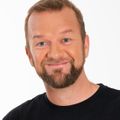Pricing
There are three flavours of Range Rover Sport P400e: the £72,875 HSE, the £75,875 HSE Dynamic and the £86,385 Autobiography Dynamic. That means, compared to the P300 HSE with a 2.0-litre petrol engine, the P400e HSE costs a whopping £8,060 more. That’s a large sum of money but the HSE is the pick of the P400e range. It comes with leather seats, 20-inch alloy wheels, a heated windscreen, Matrix LED headlights, interior ambient lighting and a Meridian sound system The HSE Dynamic is only worth the extra cash if you want a sportier look on the outside and the Autobiography Dynamic is plusher but you have to pay for it. Being a Range Rover there’s a gargantuan options list – including a range of extra special paints that start at over £6,000 – and we’d recommend picking the £229 Type 2 public charging cable.
Running costs
While some car manufacturers make very bold claims that their plug-in hybrid SUV will achieve around 200mpg (a claim made possible by testing at low speeds when the electric motor is predominantly powering the car), Land Rover is more realistic. It claims the P400e will return 87mpg – a figure that’s possible to match or even beat if you drive short distances carefully or completely on electric power. A lot of owners won’t drive short distances and will use their cars on motorways – do this and the 87mpg figure will slump, if you’re lucky, to around 40-50mpg. Once the battery is drained you’ll be driving a 2.5-tonne SUV with a small 2.0-litre petrol engine so expect around 30mpg. For CO2, the P400e coughs out a very paltry 69g/km.
The vast majority of Range Rover Sport P400es will be run as company cars. From April 2020 plug-in hybrids have been taxed at two rates for BiK (Benefit-in-Kind). Cars that can’t manage 40 miles in pure electric mode are taxed at 12%. Ones that offer more than 40 miles are taxed at 8%. The Sport P400e falls into the 12% category but could potentially save you a ton of cash over an equivalent Range Rover Sport SDV6 diesel.






















